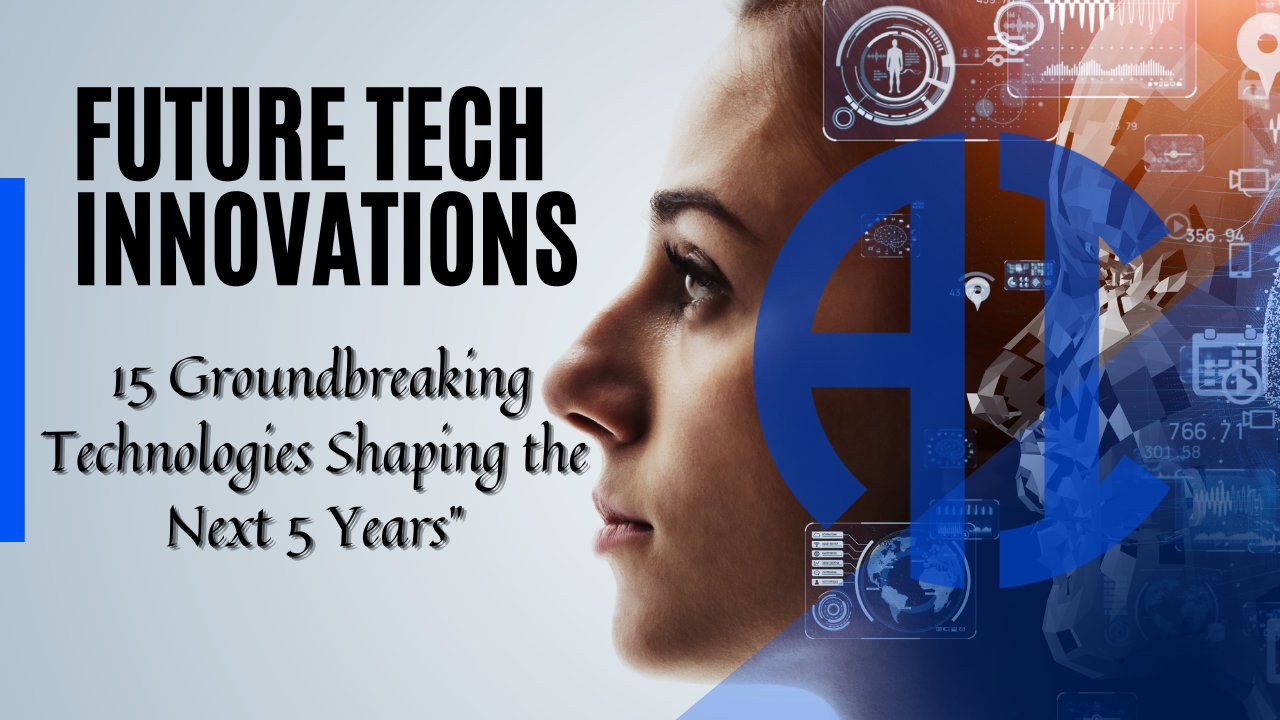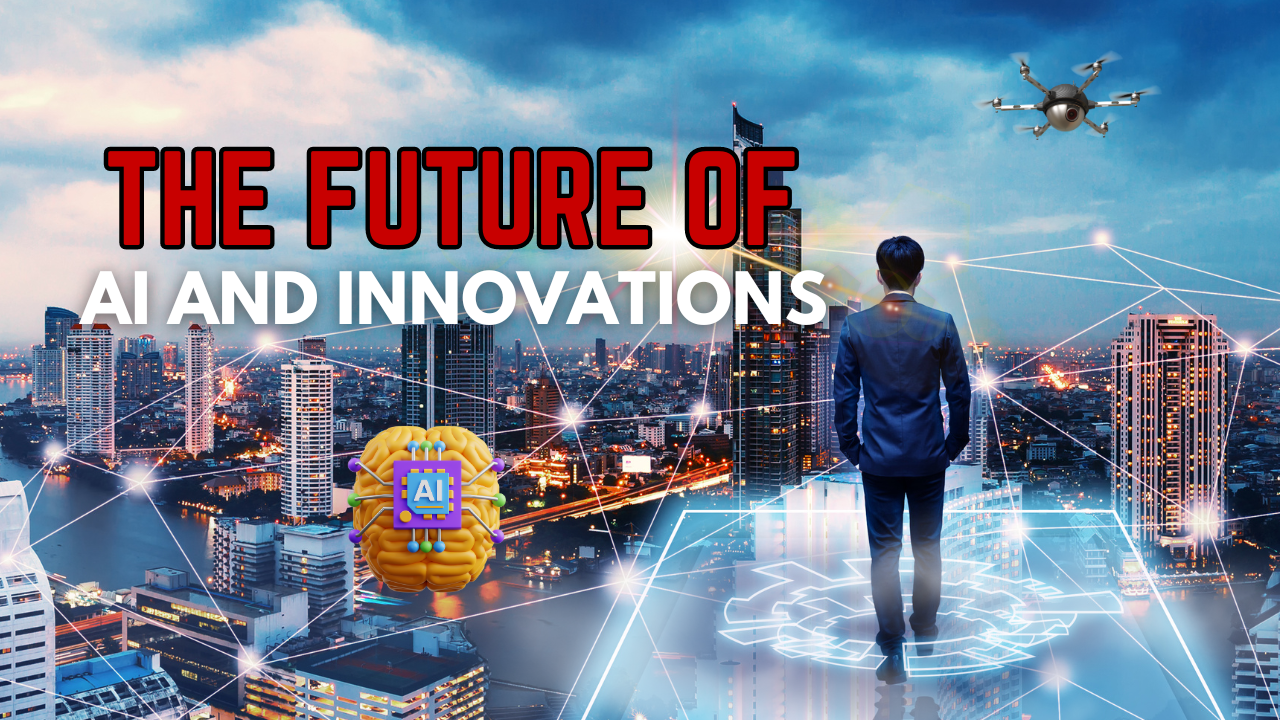Introduction: Future Tech Innovations
In the dynamic realm of technology, change is the only constant. From bulky cell phones to sleek smartphones and the advent of cloud computing, our journey has been nothing short of extraordinary. But what lies ahead? In this exploration, we'll take you through 15 groundbreaking technologies that are poised to reshape our world in the next 5 years.
1. Man-Made Stars
Picture a night sky adorned with a celestial ballet of artificial stars and satellites, swirling in synchronized harmony. These man-made constellations promise to revolutionize our communication networks, offering unprecedented connectivity and data transmission capabilities. The sky becomes not just a canvas of natural beauty but a gateway to boundless technological possibilities.
2. Hydrogen Fuel Cells
Envision a world powered by hydrogen, the universe's most abundant element. Hydrogen fuel cells symbolize an era of clean, abundant, and transformative energy. From silent cars gliding on the roads to industries humming with a new rhythm, it's the song of a greener planet.
3. Edge Computing
Revolutionizing data processing, edge computing brings computation closer to data sources like IoT devices. This real-time processing enhances application performance, minimizes latency, and improves operational efficiency. From smart factories to autonomous vehicles, it's a game-changer in innovation.
4. Smart Dust
A leap in miniaturization technology, smart dust comprises tiny wireless microelectromechanical systems collecting data from any environment. Picture swarms of microscopic sensors monitoring urban traffic, agricultural fields, or even the human body. Real-time feedback leads to smarter decisions in every aspect of life.
5. GPS 3
The future of navigation, GPS 3 promises enhanced accuracy and robust signals. It's a remarkable improvement in location services, vital for challenging environments. From everyday smartphone navigation to critical rescue operations, GPS 3 provides reliable and precise location data.
6. Smart AI Floating Farms
Combining AI with hydroponics on floating platforms, these farms optimize plant growth conditions, reducing dependency on pesticides. They represent a sustainable solution to global food demands, paving the way for a new era of resilient food production systems.
7. Graphene and Graphene Oxide
Materials poised to revolutionize industries due to their unique properties. From exceptional strength and conductivity, they promise more efficient, durable, and versatile devices. Incorporating graphene in batteries could significantly enhance their capacity and longevity.
8. Smart Contact Lenses
A leap towards invisible computing, smart contact lenses project digital information directly into the wearer's field of vision. Imagine real-time updates, directions, or restaurant reviews within your natural viewpoint. It's technology seamlessly enhancing our interaction with the surrounding environment.
9. Soundwaves - Future of Wildfire Combat
Harnessing the power of sound waves presents an innovative approach to combating wildfires. Manipulating oxygen supply, sound waves offer a rapid, efficient, and environmentally friendly way to manage wildfires, reducing reliance on chemicals or large amounts of water.
10. Quantum Computing
Set to redefine computational boundaries, quantum computing unlocks unprecedented processing capabilities. With quantum bits or qubits, it enables simultaneous processing of vast amounts of data. Imagine solving complex problems at speeds previously thought impossible.
11. 3D Printing
Evolving beyond prototyping, 3D printing steps into realms of full-scale production. It enables the creation of intricate and customized products, streamlining production processes and reducing waste. A new horizon of creative possibilities in product design and manufacturing awaits.
12. Lithium Metal Battery
Signifying the next frontier in energy storage, lithium metal batteries promise improved capacities and charging efficiencies. From electric vehicles to electronic devices, they aim to deliver longer lifespans and faster charging times, bringing us closer to a sustainable automotive future.
13. Connected Home Network Devices for Home Automation
Welcome to the future where your home is as smart as you. Connected homes integrate various devices and appliances into a cohesive network, enhancing living experiences through convenience and efficiency.
14. Molecular AI - Accelerating Drug Discovery
Molecular AI expedites drug discovery by marrying artificial intelligence with molecular science. Imagine a world where finding a new medicine is efficiently guided by intelligent algorithms, heralding a new era of personalized medicine.
15. GPT 4 and GPT 5
GPT 4 marks a monumental shift in artificial intelligence, venturing into realms of visual and auditory understanding. GPT 5 looms on the horizon, promising an even more powerful iteration inching closer to artificial general intelligence (AGI).
As we stand on the threshold of a new era, these technologies herald a future where technology becomes an even more intrinsic and transformative part of our world. Join us on this journey into the future, where the next big thing is always just around the corner.
Conclusion: Future Tech Innovations
In this exploration of the future, we've delved into 15 groundbreaking technologies that promise to redefine the boundaries of possibility within the next 5 years. From man-made stars to quantum computing and smart contact lenses, these advancements paint a vivid picture of a world on the cusp of transformative change.
As we stand at the forefront of innovation, the possibilities are both awe-inspiring and humbling. The vision of a sky adorned with artificial constellations, a planet powered by clean hydrogen energy, and microscopic sensors shaping our decisions represents a future where imagination meets reality.
The journey into the future is not just about technological progress; it's about building a sustainable and harmonious world. From connected homes making daily life more intuitive to molecular AI revolutionizing drug discovery for personalized medicine, these technologies offer solutions to pressing global challenges.
The landscape of innovation is dynamic, and these advancements are the threads weaving the fabric of our technological tomorrow. They are not just tools; they are companions navigating the vast landscapes of human knowledge, communication, and creativity.
As we anticipate the arrival of GPT-5, a beacon of artificial general intelligence, we find ourselves on the brink of a new era where technology seamlessly integrates into our daily experiences and societal frameworks. The journey into the future is marked by ethical integrity and innovative brilliance.
Join us in embracing tomorrow's innovations, where the next big thing is not merely a concept but a reality waiting to unfold. In this ever-evolving technological landscape, the only constant is change, and with it comes the promise of a brighter, smarter, and more interconnected future. Let's step into this future together, where the unimaginable becomes achievable, and the extraordinary becomes the norm. Welcome to the tomorrow we've only dared to dream of—a future shaped by innovation, curiosity, and the relentless pursuit of progress.
Frequently Asked Questions (FAQs): Future Tech Innovations
Q1: What are man-made stars and how do they revolutionize communication networks?
Man-made stars refer to artificial constellations created using satellites. These constellations promise to revolutionize communication networks by offering unprecedented connectivity and data transmission capabilities. Imagine a night sky filled not just with natural beauty but also with a synchronized dance of artificial stars, enhancing our global communication infrastructure.
Q2: How do hydrogen fuel cells contribute to clean energy production?
Hydrogen fuel cells symbolize a future where energy is clean, abundant, and transformative. These cells use hydrogen, the universe's most abundant element, to generate power. This innovation holds the promise of silent, environmentally friendly transportation and industries humming to a greener rhythm, reducing our reliance on traditional energy sources.
Q3: What is Edge Computing, and how does it enhance data processing?
Edge Computing revolutionizes data processing by bringing computation closer to data sources, such as IoT devices. This proximity enables real-time data processing, enhancing application performance and user experiences. It minimizes latency, conserves bandwidth, and improves operational efficiency, making it a game-changer for applications like autonomous vehicles and smart homes.
Q4: What is smart dust, and how does it impact data collection?
Smart dust represents a leap in miniaturization technology, consisting of tiny wireless microelectromechanical systems. These microscopic sensors collect data from various environments, from urban traffic to agricultural fields. By providing real-time feedback, smart dust contributes to smarter decision-making in diverse aspects of life.
Q5: How does Quantum Computing differ from traditional computing, and what applications does it have?
Quantum Computing leverages quantum bits (qubits) to enable the simultaneous processing of vast amounts of data, unlike traditional computing. This technology is transformative for fields requiring complex problem-solving, such as cryptography, pharmaceuticals, and artificial intelligence. Quantum Computing promises speeds and capabilities previously thought impossible.
Q6: What are the applications of 3D printing beyond prototyping?
3D printing technology has evolved beyond prototyping and is stepping into realms of full-scale production. It enables the creation of intricate and customized products, from automotive parts to personalized medical implants. This technology fosters innovation by allowing rapid development, testing of prototypes, and transitioning into manufacturing final products, reducing waste in the process.
Q7: How do smart contact lenses enhance our interaction with the environment?
Smart contact lenses represent a leap towards invisible computing, minimizing screen dependency. For example, Mojo Vision's smart contact lenses project digital information directly into the wearer's field of vision. This technology offers a hands-free, discreet, and intuitive way to access and process information, making technology an extension of our natural senses.
Q8: How can sound waves be utilized in wildfire combat?
Harnessing the power of sound waves presents an innovative approach to combating wildfires. Sound waves can manipulate oxygen supply, a crucial element for fires. This technique offers a rapid, efficient, and environmentally friendly way to manage wildfires, reducing reliance on chemicals or large amounts of water.
Q9: What is the significance of molecular AI in drug discovery?
Molecular AI combines artificial intelligence with molecular science to expedite drug discovery and development. This futuristic alchemy turns data into life-saving drugs with unprecedented speed and precision. It heralds a new era of personalized medicine, where treatments are tailor-made to individual genetic makeups, maximizing effectiveness while minimizing side effects.
Q10: How does GPT-4 and the upcoming GPT-5 redefine artificial intelligence?
GPT-4 marks a monumental shift in artificial intelligence, extending beyond text to process images and sounds with sophistication. It seamlessly integrates into daily experiences and societal frameworks. GPT-5, on the horizon, promises an even more powerful iteration, inching closer to artificial general intelligence (AGI). This anticipates a future where technology becomes an intrinsic and transformative part of our world, blurring the boundaries between machine capabilities and human-like understanding.
Written by: Muktar

























